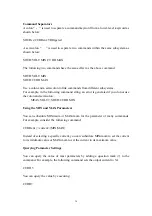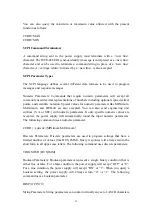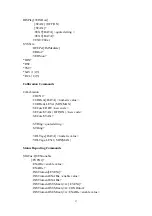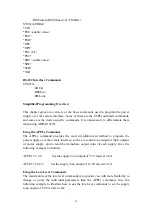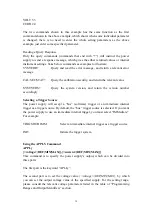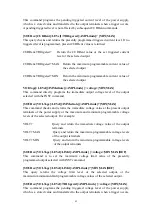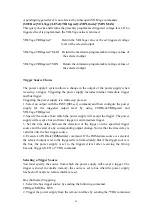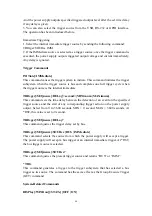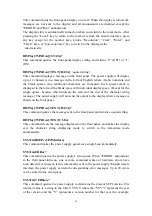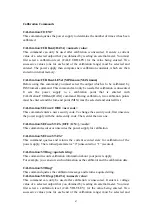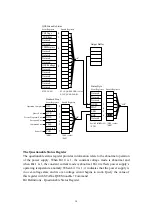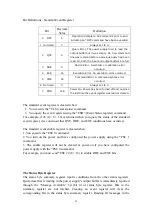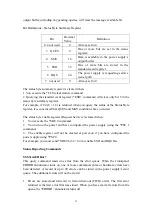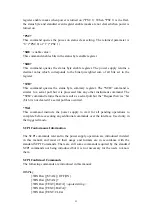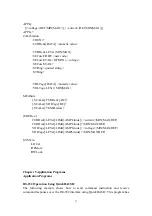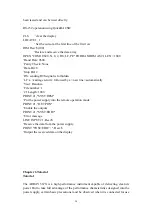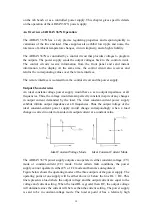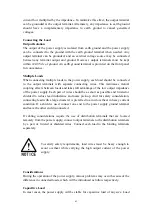
48
entered. The power supply then computes new voltage calibration constants, which
are then stored in internal memory.
CALibration:VOLTage:LEVel {MINimum | MAXimum}
Before using this command, you must select the output which is to be calibrated by
INSTrument command. This command can only be used after calibration is unsecured.
It sets the power supply to a calibration point that is entered with
CALibration:VOLTage[:DATA] command. During calibration, two calibration points
must be entered and the low-end point (MIN) must be selected first.
RS-232 Interface Commands
SYSTem:LOCal
This command makes the power supply switch to local mode from remote mode. All
keys on the front panel are fully functional. The “Rmt” annunciator on the display is
off.
SYSTem:REMote
This command places the power supply in the remote mode. All keys on the front
panel, except the “Local” key, are disabled. The “Rmt” annunciator on the display is
on.
SYSTem:RWLock
This command places the power supply in the remote mode. All keys on the front
panel, including the “Local” key, are disabled. The “Rmt” annunciator on the display
is on.
Ctrl-C
This command clears the operation in progress over remote interface and discards any
pending output data.
The SCPI Status Registers
All SCPI instruments implement status registers in the same way. The status system
records various instrument conditions in three register groups: the Status Byte register,
the Standard Event register, and the Questionable Status register group. The Status
Byte register records high-level summary information reported in the other register
groups. Chapter Five will illustrate how to use SCPI status registers.
What is an Event Register?
An event register is a read-only register that reports defined conditions within the
power supply. Bits in an event register are latched. Once an event bit is set,
subsequent state changes are ignored. Bits in an event register are automatically
cleared by a query command of that register (such as *ESR? Or STAT:QUES:EVEN?)

